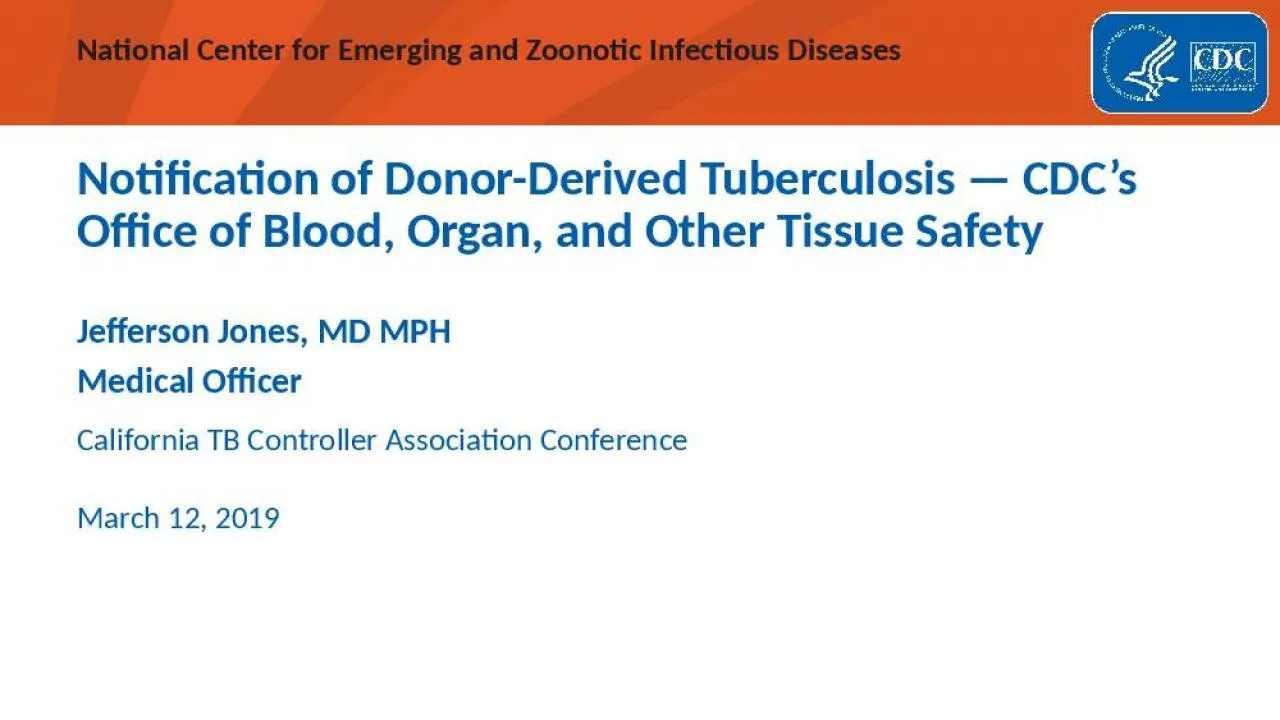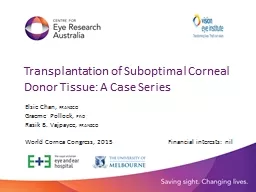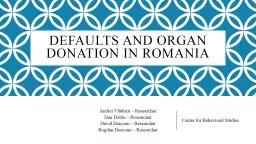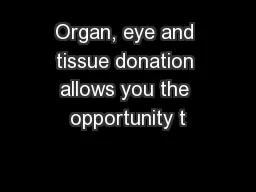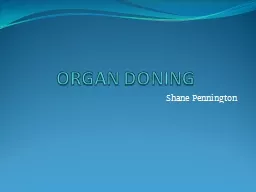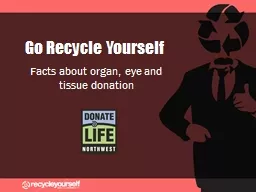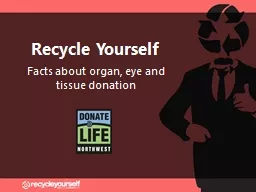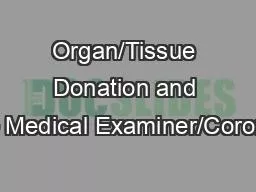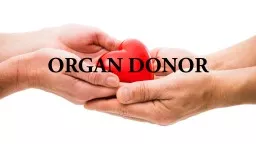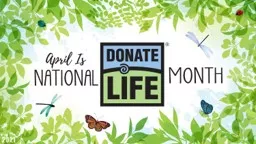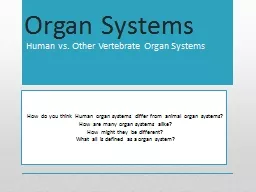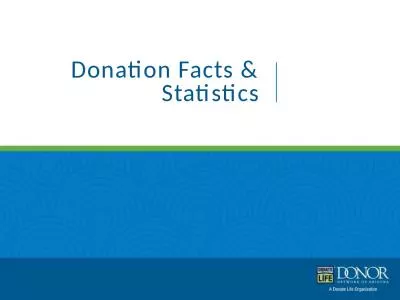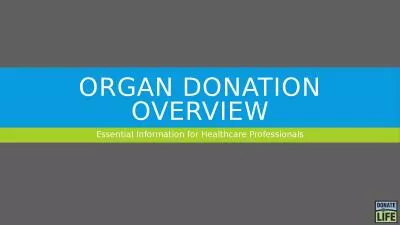PPT-Notification of Donor-Derived Tuberculosis — CDC’s Office of Blood, Organ, and Other
Author : sophia2 | Published Date : 2022-05-14
Jefferson Jones MD MPH Medical Officer California TB Controller Association Conference March 12 2019 Outline Organ transplantation in the United States Regulation
Presentation Embed Code
Download Presentation
Download Presentation The PPT/PDF document "Notification of Donor-Derived Tuberculos..." is the property of its rightful owner. Permission is granted to download and print the materials on this website for personal, non-commercial use only, and to display it on your personal computer provided you do not modify the materials and that you retain all copyright notices contained in the materials. By downloading content from our website, you accept the terms of this agreement.
Notification of Donor-Derived Tuberculosis — CDC’s Office of Blood, Organ, and Other: Transcript
Download Rules Of Document
"Notification of Donor-Derived Tuberculosis — CDC’s Office of Blood, Organ, and Other"The content belongs to its owner. You may download and print it for personal use, without modification, and keep all copyright notices. By downloading, you agree to these terms.
Related Documents

